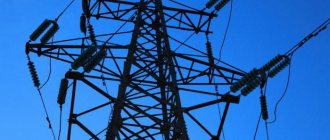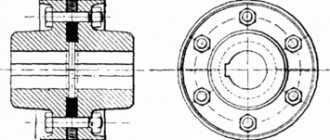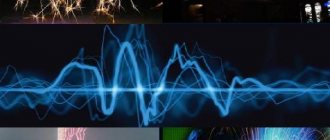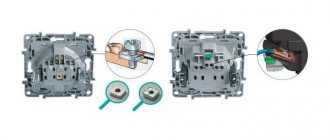Electrification of bodies. Two kinds of electric charges
“Sunstone” was the name given to amber, a hardened pine resin, in Ancient Greece. The Greeks were very fond of amber products for its shine and sunny color.
Amber resin
The story of the discovery of the ability of amber to attract other bodies after rubbing against something has long become a legend. This is what she says:
The nature of these phenomena could only be explained in the second half of the twentieth century, and the phenomena themselves, named electrical in honor of amber, have long served man. There are a lot of electrical phenomena. Among them, electrification is the body's ability to attract after friction, touch or influence.
Electrification is observed not only in two solid bodies. This occurs when a liquid flows over metal or splashes into many droplets when it hits a solid body.
Source
Cases have been recorded when, in the dark at night, snow avalanches were not only heard, but also visible. Their movement was accompanied by a greenish glow.
N. Tensing, the conqueror of the Himalayas, observed an interesting phenomenon occurring with his tents. They were inserted into each other to retain heat. During a strong dry wind, the space between the tents was filled with small sparks. The icy tents were electrified.
Bodies that have experienced electrification are called electrified.
Source
Such bodies can influence the state of other bodies in such a way that they also become electrified.
This is explained by the transfer of electric charge from an electrified body to a neutral one. Charge characterizes the amount of electrification of bodies.
There are two types of charges: negative and positive. This division is conditional. The charge obtained by rubbing a glass body with silk is considered positive. The charge that an ebonite stick receives when rubbed against wool or fur has received the status of a negative charge. Some bodies become electrified, like glass, and acquire positive charges. Others, like ebonite, receive negative charges when electrified.
Electrified bodies or charges influence each other. Charges of the same sign repel, and charges of different signs attract.
Living mysteries: electrical phenomena in nature
Scientists all over the world are studying the amazing interaction between electricity and living organisms, but much still remains a mystery to us.
Thales of Miletus was the first to draw attention to electric charge in 600 BC. e. He discovered that amber, rubbed with wool, acquires the properties of attracting light objects: fluff, pieces of paper.
The pioneer of research into the role of the electric field in a living organism was Luigi Galvani, professor of anatomy from the University of Bologna. Beginning in 1775, he became interested in the relationship between “electricity and life.” At the end of 1780, Galvani was studying the nervous system of dissected frogs in his laboratory.
Quite by chance, his physicist friend was working in the same room, conducting experiments with electricity. Galvani placed one of the dissected frogs on a table on which stood an electric machine (static electricity generator), and every time the machine gave a discharge, the frog's muscles contracted.
At this time, Galvani's wife entered the room. A terrible picture appeared before her eyes: when there were sparks in an electric machine, the legs of a dead frog, touching an iron object (a scalpel), twitched. Galvani's wife pointed this out to her husband in horror.
Faced with an inexplicable phenomenon, Galvani considered it best to study it in detail experimentally.
Galvani decided that it was all about electric sparks. To get a stronger effect, during a thunderstorm he hung several prepared frog legs on copper wires on the balcony. However, lightning - giant electrical discharges - did not in any way affect the behavior of the prepared frogs. What lightning failed to do, wind did. When the wind gusted, the frogs' legs swayed and sometimes touched the iron bars of the balcony. As soon as this happened, the paws twitched. Galvani, however, attributed the phenomenon to lightning electrical discharges.
The scientist concluded that electricity somehow “enters” the nerve, and this leads to muscle contraction. He showed that metals were needed for the effect. He devoted five years to studying the role of various metals in their ability to cause muscle contractions. In the presence of bodies that are not conductors of electricity, there is no effect. Galvani came to the conclusion that if the nerve and muscle lie on identical metal plates, then closing the plates with wire has no effect. But if the plates are made of different metals, their closure is accompanied by muscle contraction. Finally, he even showed that different metals give different degrees of effect. But Galvani failed to draw the correct conclusion. Being a doctor, not a physicist, he saw the reason in the so-called “animal electricity”. Galvani confirmed his theory with reference to well-known cases of discharges that some living beings, for example, “electric fish,” are capable of producing.
Man and electricity
Have you ever wondered why electrified people's hair rises up? It turns out that the hair is electrified by the same charge. As you know, like charges repel each other, so hair, like the leaves of a paper plume, diverges in all directions. If any conducting body, including a human body, is isolated from the ground, then it can be charged to a high potential. Thus, with the help of an electrostatic machine, the human body can be charged to a potential of tens of thousands of volts. Hence the question: does the electric charge placed in this case in the human body have an effect on the nervous system?
The human body is a conductor of electricity. If it is isolated from the ground and charged, then the charge is located exclusively on the surface of the body, so charging to a relatively high potential does not affect the nervous system, since the nerve fibers are located under the skin. The influence of an electric charge on the nervous system is felt at the moment of discharge, during which a redistribution of charges occurs on the body. This redistribution is a short-term electric current passing not along the surface, but inside the body.
What is (approximately) the electrical capacity of a person? If a person’s position is such that his body is in the vicinity of a grounded conductor (remote, for example, from the walls of a room), then his electrical capacity is approximately 30 centimeters. This means that the electrical capacity of the human body under the specified conditions is equal to the capacity of a spherical conductor with a radius of 30 centimeters.
Another question is why is the random passage of current through two closely located points of the body, for example, two fingers of the same hand, felt not only by these fingers, but by the entire nervous system? Of all the tissues that make up the body, the outer layers of the skin have the least conductivity, and the nerve fibers have the greatest, so the electrical current in the body passes mostly through the nerve fibers and thereby affects the entire nervous system.
When checking the quality of flashlight batteries, you sometimes touch the metal plates with your tongue. If your tongue feels a bitter taste, then the battery is good. Why does battery electricity taste bitter? Human saliva contains small amounts of various organic salts (sodium, potassium, calcium, etc.). When an electric current passes through saliva, these salts undergo electrolysis, their components are released at the battery poles, and the tongue feels a bitter taste.
Animals and electricity
When stroking a cat in the dark with a dry palm, you can notice small sparks appearing between the hand and the fur. What's going on here? When stroking a cat, the hand is electrified, followed by a spark discharge. Let's remember Galvani's experiments. Having connected two wires of different metals, he touched the leg of a freshly prepared frog with the end of one of them, and the lumbar nerves with the end of the other; at the same time, the muscles of the paw contracted convulsively. How to explain this phenomenon? Two metals and the liquid of the foot make up a galvanic cell. The current generated when the circuit is closed irritates the frog's nerve endings.
Another interesting question: why do birds land on high-voltage transmission wires with impunity? The body of the bird sitting on the wire is a branch of the circuit connected parallel to the section of the conductor between the bird's legs. When two sections of a circuit are connected in parallel, the magnitude of the currents in them is inversely proportional to the resistance. The resistance of a bird's body is huge compared to the resistance of a short length of conductor, so the amount of current in the bird's body is negligible and harmless. It should also be added that the potential difference in the area between the bird’s legs is small.
There are cases when a bird sitting on a power line is electrocuted. Under what circumstances might this happen? Birds most often die when, while sitting on a power line, they touch the pole with their wing, tail or beak, that is, they connect to the ground.
Another interesting fact is why do birds fly off high voltage wires when the current is turned on? When high voltage is turned on, a static electric charge appears on the bird’s feathers, due to which the bird’s feathers diverge, like the tassels of a paper plume connected to an electrostatic machine. This static charge causes the bird to fly off the wire.
In the cells, tissues and organs of animals and plants, a certain potential difference arises between their individual sections, the so-called bioelectric potentials, which are associated with metabolic processes in the body. What is the magnitude of biopotentials?
These bioelectric potentials are very small. Their voltage ranges from several microvolts to tens of millivolts. To record such time-varying potentials, very sensitive instruments are required that make it possible to record the biocurrents of living tissue without distortion. Electrical activity turned out to be an integral property of living matter.
Are electroscope and electrometer the same thing?
There is a little confusion between these two concepts: electroscope and electrometer. But, if we consider the second parts of these words, then we can already say that they have a difference. “Skop” - “cluster”, “together”, “together”. "Meter" means to "measure" something.
The appearance of the devices also differs.
Electroscope
An electroscope consists of a metal body containing a metal rod. The rod comes out from the top. You can attach a hollow ball or a flat plate to it. Two thin paper or metal petals are attached to the rod at the bottom.
If you touch the rod with a charged body, the petals will move in different directions.
Source
It goes like this. Metals are conductors of electric charge. When a charged body touches a metal rod, the charge travels through it to the petals. But this charge is of the same sign, which means that both petals are charged equally, and repulsion occurs.
Electrometers
The electrometer also has a metal body and a metal rod, but unlike an electroscope, there are no petals at the lower end of the rod. An arrow is attached to the middle part of the rod, and a small scale is attached to the body.
Source
An electrometer can show more than just the presence of a charge. It performs simple measurements.
It turns out that an electroscope and an electrometer are slightly different in their design and purpose.
Transmission (conduction) of electricity
Can all substances transmit electrical charge equally? The answer can be obtained using two electrometers, a metal rod and an ebonite stick. The rod and stick are attached to a plastic handle.
- a – impart a charge to the first electrometer by touching the ball with some charged body;
- b – connect both electrometers with a metal rod. Half of the charge from the first electrometer will transfer to the second;
- c – connect the electrometers with an ebonite stick. No charge transition is observed.
Substances capable of conducting electrical charges, as in the case under letter b, are called conductors (metals, acidic, alkaline and saline solutions). Substances that cannot transfer charges are called dielectrics (insulators). Good dielectrics are rubber, glass, hard rubber, porcelain, plastics, air, etc.
Divisibility of electric charge. Electron
In an experiment with electrometers, a metal rod transfers part of the charge from one electrometer to another. From experience it is clear that the charge is divided. If you touch the rod of the second electrometer with your hand, the charge will be removed from it and distributed throughout the body (the human body is a good conductor of electricity). If you connect the devices again with a metal rod, the remaining charge will again separate. If you repeat the same steps, the charge will divide each time. It seems that this process will continue indefinitely.
The charges gradually decrease so much that the electrometer is no longer able to measure them. Very precise experiments have already shown that it is impossible to divide a charge indefinitely; there is a smallest electric charge that can no longer be divided. It is called an elementary charge with absolute value e. Charges are measured in coulombs (C), named after Charles Coulomb, a French physicist.
The electron particle has an elementary electric charge with a negative sign (Greek “electron” - “amber”).
Source
Electric field
Bodies can act mechanically on each other only when they touch (blow, push, contact). The first body can influence the second with the help of an intermediary, the third body. For example, the eardrum perceives the sound of a musical instrument through an intermediary, which is air. For electric charges the situation is different. They interact without touching and without an intermediary. This interaction is determined by the electric field that exists around any electric charge.
The field is invisible. Its presence is confirmed by instruments or by its action on bodies or charges.
The English scientist Michael Faraday, having introduced the concept of an electric field, proposed its schematic representation using lines with arrows. The arrows were called lines of force. The field lines of a negative charge are directed towards the charge, while those of a positive charge are directed away from the charge.
Source
When two charges approach close distances, the electric fields are depicted as follows:
Lines of force of like charges repel, and opposite charges attract. As a result of this behavior of fields, electric charges are repelled or attracted.
When a body or particle enters an electric field, it experiences some force. This is the main property of the electric field.
The direction of action of the electric force depends on the sign of the charge and the distance from the charged body.
Earth's electric field
There is an electric field at the surface of the Earth. Our planet has some electrical charge. Studies of this field have shown that the Earth has a negative charge q=-450000 C, which near the surface creates a vertical electric field with a strength of E=130 V/m. At an altitude of 50 km above the Earth's surface, the field practically disappears.
We live in a constant electric field of significant intensity. If we compare the potentials at the height of the top and heels of a person, we get a potential difference of 200 V. Why doesn’t electric current pass through the body? Because our body is a conductor. And our real potential becomes equal to the potential of the Earth.
Where do the field lines begin that end on Earth? Atmospheric studies have shown that at an altitude of several tens of kilometers above the Earth's surface there is a layer of positively charged (ionized) molecules called the ionosphere. Various atmospheric phenomena lead to the exchange of charges between the ionosphere and the Earth.
How are bodies electrified?
In the eighteenth century, the American scientist Franklin (1706-1790) suggested that electricity is a special weightless liquid, so thin that it permeates all bodies. Electrification, in his opinion, is based on the fact that electricity floats from one body to another. This theory did not find support, since its correctness could not be confirmed experimentally.
Electrified hair
It is known that the molecules of matter consist of smaller particles - atoms. It was possible to explain why bodies become electrified only after studying the structure of atoms. It turned out that atoms represent a complex system of elementary particles:
- electrons having a negative charge move around the nucleus;
- protons with a positive charge are found in the nucleus;
- Neutrons, which are chargeless particles, are found in the nucleus.
All these tiny particles have an elementary charge. The proton has a positive charge, the neutron has no charge, which means that the nucleus is positively charged. There are as many electrons in an atom as there are protons. As a result, the atom as a whole is electrically neutral, that is, it has no charge.
Under normal conditions, substances consisting of such atoms are also electrically neutral.
As a result of friction, some electrons can move from one body to another. This occurs at distances very close to intermolecular ones. But when the bodies are separated after friction, the electrons that left their atoms end up on another body. It turns out that on one body there are not enough electrons (deficiency), and on the other there are more electrons (excess). Where there is excess, the body is negatively charged. Where there is a deficiency, the body is charged positively.
So,
[edit] Types
Electrical atmospheric phenomena include:
- Lightning is a powerful discharge of atmospheric electricity (occurs between clouds and the ground), accompanied by a flash of light (lightning) and sound peals (thunder), heard at a distance of up to 15-20 km. A thunderstorm is associated with cumulonimbus clouds, and is almost always accompanied by heavy rain, wind squalls, and hail.
- Lightning - short flashes of light illuminating the sky. Associated with distant thunderstorms, at night lightning can be seen at a distance of 75-100 km, during the day - at a distance of 15-20 km. Cloudiness may be low or even absent.
- Aurora is a bluish or yellowish glow of the night sky in the form of vast, bizarre spots with changing outlines, appearing in the ionosphere during significant fluctuations in the earth's magnetic field.
Beneficial and harmful effects of electrification
If electrification is studied in detail and used correctly, it can become a useful physical phenomenon.
There are electrostatic precipitators that are used in chimneys. When rubbed against a pipe, soot particles become electrified and settle on its walls. Fewer harmful substances enter the air.
To paint a car, its body is charged positively and the paint is charged negatively. The paint particles repel each other and at the same time are attracted to the car parts, which contributes to uniform, dense and thin painting.
In bakeries, it is easier to get a well-mixed dough if you charge the flour positively and the water negatively, the grains of flour will rush towards the drops of water. In such a situation, the dough will turn into a homogeneous mass faster, which will significantly increase the productivity of the enterprise.
Electricity is used when smoking fish. Fish carcasses are connected to negatively charged rods, and smoke smoke is charged positively. The smoke sticks to the surface of the fish and penetrates it. Electric smoking occurs evenly and quickly. The smoked layer gives the product a special taste and at the same time protects the fish from spoilage.
Electric precipitators that attract dust are used in large poultry farms. They clear the air of dust, which has a positive effect on the egg production of chickens and the development of young animals.
Electrification can also cause great harm.
Source
Electrification is very dangerous for fuel tanks. As the tank is filled, charges accumulate inside. As you move, charges continue to accumulate. When the tank is released, the smallest spark can cause an explosion.
In operating printing machines, friction electrifies paper, which can lead to ignition and fire. Often in home printers, sheets of paper stick together when printing for a long time. This is also electrification.
In the textile industry, carding machines and special scissors that cut the pile suffer from electrification. All this leads to thread tangling, thread breakage and, as a result, machine breakdowns.
In rubber production, the rubber passing between two rotating shafts is electrified. Approaching such rubber with any conductive body can cause a spark and fire.
And, of course, a person experiences unpleasant sensations from electrification of clothes, hair, synthetic bedspreads and carpets. This happens more often in winter when the air is drier. When rubbing while walking on synthetic surfaces or removing clothes, electrons “cannot find” water droplets in the air and settle on a person’s skin, electrifying it. Instead of using antistatic agents, running a damp hand over clothing releases accumulated charges. Clothes stop sticking to the body. Another cause of electrification is the wrong combination of clothes. Different tissues become electrified through friction against each other and transfer charges to a person. People's reactions to these phenomena vary, because each person's body's electrical conductivity is different. Some people will not notice the electrification, while others will be shaken violently when the charges arise. Ventilation of rooms to humidify the air, a competent approach to choosing clothes and caring for them will affect the reduction of manifestations of electrification of the human body.
Grounding effectively protects against electrification. The charge goes through the conductor into the ground and is distributed in it, preventing big and small troubles.
Electrical phenomena in nature and technology
Annex 1
Tasks
I “Electrical phenomena in nature”
Electrical phenomena in living nature
The first objects indicating the presence of electrical phenomena in living nature were fish. Residents of South America have long noticed that some fish are capable of delivering paralyzing blows. Electric eels, Nile electric catfish, and stingrays have such abilities. Even the ancient Romans knew how electric stingrays get their food: they do not chase prey, do not sit in ambush, but crabs or octopuses that find themselves next to stingrays calmly swimming in the water begin to convulse and die from an electrical discharge.
The nearly blind electric eel navigates and recognizes objects by emitting weak discharges—about one per minute—that briefly create an electric field around its entire body. If any object or potential victim enters this field, the fish immediately becomes alert and either goes around the obstacle or hurries to the prey. The Amazon electric eel is a freshwater fish native to South America. Unlike its small relatives, it reaches 2.5 m in length, with four-fifths of the body being electrical organs. This is one of the few animals that kill with electric shock. It generates voltage up to 600 volts, which can knock down a horse. He can smoothly move his long body under snags or among stones without ever touching them.
The beak of the platypus, an inhabitant of Australian rivers, has amazing electrical properties. The platypus's beak helps the animal find food by swimming underwater with its eyes, ears and nostrils closed. The wide, leathery beak of this unusual mammal is covered with thousands of tiny pores containing receptors that sense weak electrical fields created by the muscle contractions of their prey. By moving its sensitive beak along the bottom, the platypus satisfies its insatiable appetite: every day it eats almost as much food as it weighs. It also senses weaker electric fields created by the movement of water through obstacles such as stones and logs. This helps the platypus navigate.
Electrical phenomena in inanimate nature
For a long time, people have observed thunderstorms, lightning, “St. Elmo’s lights, and the northern lights. The electrical nature of lightning was revealed in the research of the American physicist B. Franklin, on whose idea an experiment was carried out to extract electricity from a thundercloud. Franklin's experience in elucidating the electrical nature of lightning is widely known. In 1750, he published a work that described an experiment using a kite launched into a thunderstorm. The average length of lightning is 2.5 km, some discharges extend up to 20 km in the atmosphere.
Most often, lightning occurs in cumulonimbus clouds, then they are called thunderstorms; Lightning sometimes forms in nimbostratus clouds, as well as during volcanic eruptions, tornadoes and dust storms.
Lightning is a serious threat to human life. A person or animal being struck by lightning often occurs in open spaces because... The electric current follows the shortest path “thundercloud-ground”. Often lightning strikes trees and transformer installations on the railway, causing them to catch fire. It is impossible to be struck by ordinary lightning inside a building, but there is an opinion that so-called ball lightning can penetrate through cracks and open windows. A normal lightning discharge is dangerous for television and radio antennas located on the roofs of high-rise buildings, as well as for network equipment.
Our planet is full of mysteries and unusual phenomena. For a long time, people have been interested in such a specific glow, which was called “St. Elmo’s Lights.” It occurs on building spiers and various pointed objects during snow storms, thunderstorms and tornadoes.
In the Middle Ages, people did not find a scientific explanation for this phenomenon and considered such a light a sign from the Higher Powers. However, today physicists clearly explain this amazing process. It turns out that when a thunderstorm approaches, a huge amount of electricity accumulates on the ground. Considering the fact that the air is charged with positive particles, and the earth – with negative ones, an electric discharge occurs in the middle layers of the atmosphere when the particles come into contact. St. Elmo's Lights are bright, short-lived flashes, sparks, or blue-white lights that resemble a torch. Their occurrence is accompanied by specific sound effects: hissing, crackling.
Group I assignments.
| Give examples of electrical phenomena in living nature. |
| Tell us about one phenomenon in living nature. |
| Give examples of electrical phenomena in inanimate nature. |
| What devices are used to protect buildings from lightning? |
| You were caught in a thunderstorm while you were walking with your dog, leading it on a thin chain. Your actions to save yourself and your dog from lightning. |
| Make a collage “Electrical phenomena in nature” |
II tasks .
Electrical phenomena in technology Electrical phenomena in technology
| Industrial filters for removing particulate matter from gas emissions cannot catch dust that is too fine. For this purpose, electric precipitators are used. Streams of electrons flow from the pointed ends of highly electrified electrodes, which charge the dust particles. Under the influence of an electric field, charged dust particles are deposited on electrodes with the opposite charge sign. The design of a laser printer is based on electrical phenomena. When the printer receives a print job, the image is “drawn” using a laser in the form of positively charged dots. Then very fine dry paint is poured from the container onto the drum, which sticks only in those places where there are positively charged points. Using a special mechanism, paper is fed to the drum, acquiring a negative charge along the way. The paper comes into contact with the photodrum, particles of positively charged ink are attracted to the negatively charged sheet, on which a print remains. The paper then passes over a hot roller where the ink particles are “melted” into the paper. In modern automobile factories, car bodies are painted in special chambers, where the paint is sprayed and at the same time electrically charged negatively, and then settles on the body, which is positively charged. Thus, the painting process is automated and high color uniformity is achieved. Similar to the process of painting cars, fish is smoked in the food industry. Smoking is the process of impregnating food with smoke. Smoke particles are charged positively, and they evenly settle on the negatively charged carcass of fish or meat, so the smoking process occurs faster and with better quality. To obtain a layer of fluff on any material in an electric field, you need to ground the material, cover the surface with an adhesive, and then pass a portion of the fluff through a charged metal mesh located above this surface. The fibers are quickly oriented in the field and, distributed evenly, settle on the glue strictly perpendicular to the surface. This is how coatings similar to suede or velvet are obtained. It’s easy to get a multi-colored pattern by preparing portions of piles of different colors. This is how you can make multi-colored carpets. If small particles of one substance are charged positively and another negatively, then it is easy to obtain a mixture of them, where the particles are evenly distributed. For example, at a bakery, you no longer have to do a lot of mechanical work to knead the dough. Positively charged grains of flour are conveyed by air flow into the chamber, where they meet negatively charged droplets of water containing yeast. Grains of flour and droplets of water form a homogeneous dough. Many other examples of useful applications of static electrification can be given. The technology based on this phenomenon is convenient: the flow of charged particles can be controlled by changing the electric field, and the whole process is easy to automate. In situations where friction of contacting surfaces occurs, the phenomenon of electrification can be observed. This is very dangerous in some industries (for example, flour mills, textile and chemical plants), as well as in the manufacture of electronic devices. For example, leather or rubber belts that transmit rotation in mills are electrified, and the resulting spark discharge can cause an explosion of flour dust. During operation of the weaving loom, the fabric fibers acquire opposite charges due to friction, this leads to their mutual repulsion (they begin to “puff up”), which makes working on the loom much more difficult. In addition, electrified fabric attracts dust particles from the air, so the fabric becomes very dirty during production. |
When collecting electronic devices, some static-sensitive components (such as microcircuits) may be damaged.
Therefore, employees involved in the installation of electronic microcircuits are required to wear special bracelets with a wire connected to ground. During flight, due to friction with the air, airplanes become electrified. Therefore, after landing, you cannot immediately attach a metal ramp to the plane: an electric spark may occur and, as a result, a fire. First, the plane is discharged: a metal cable connected to the body of the plane is lowered to the ground, and the electrical charges go into the ground.
Similar precautions are used in cars: a metal chain is attached to the body of the fuel tanker, which drags along the ground, discharging accumulated charges into it. When draining fuel or refueling, any fuel tanker must be connected to grounding with a metal cable.
To neutralize the harmful effects of static electricity: in production, machines and machines are grounded, the air is humidified, and special charge neutralizers are used; At home they humidify the premises, use special additives to water when washing floors, and antistatic agents for clothes.
Group II tasks.
| Give examples of electrical phenomena in technology? |
| Tell us about one phenomenon? |
| What benefits do electrical phenomena bring? |
| Do electrical phenomena harm technology? Give examples. |
| How can you neutralize the harmful effects of static electricity? |
| Why is it necessary to wear shoes with rubber soles when performing electrical work performed under voltage? |
| Make a collage “Electrical phenomena in technology” |










